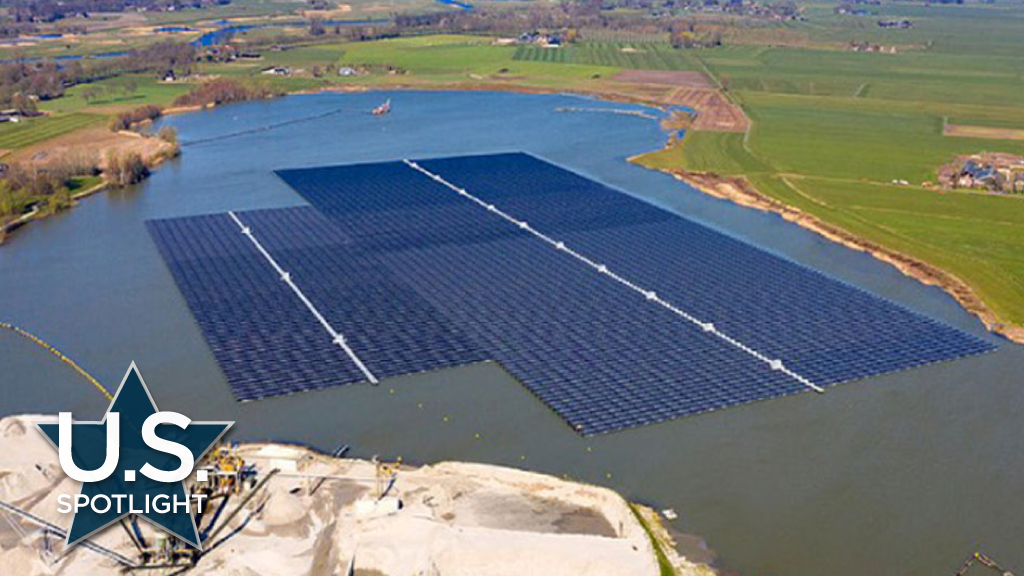Summer heat has already hit Texas this year with a predicted surge in demand for electricity.
Over the June 11 and 12 weekend, demand hit an all-time peak, surpassing 75GW.
Although the Electric Reliability Council of Texas says it has a summer reserve of 22.8 per cent, skeptics feel blackouts are inevitable due to severe weather events and unplanned maintenance issues.
The state is dealing with the dual challenge of anticipated future electricity demand deficits while minimizing any increased dependency on fossil-fuelled power generation. The hope is that renewables like solar generation will do both, particularly given the ongoing requirements of the state’s construction boom.
However, forecast investment in solar installations took a drop of nearly 50 per cent when the federal government announced a tariff investigation in March concerning solar panels and components sourced in the Far East. This put 100,000 American jobs at risk and placed President Joe Biden’s clean energy goals in doubt.
The good news was the announcement in early June of a 24-month tariff exemption under the White House’s invocation of the Defense Production Act. With the tariff exemption bringing import costs closer to pre-pandemic levels, there’s a turnaround in new investment and construction of solar facilities proposed for the near future.
Domestic solar component producers, particular those in Texas itself, are unhappy with the White House announcement. However, those observing the state’s increasing electrical demands see the tariff reductions improving the attractiveness of solar farms across Texas.
Some of the most recent solar facility investors in Texas are foreign companies.
The Roadrunner Solar Farm located in Upton County, five miles northeast of McCamey, came online in 2021 and today generates nearly 500MW of power. Italian international renewable company Enel Green Energy says the Roadrunner is the largest solar farm in the United States and offsets more than 800,000 tons of CO₂ emissions a year.
Two solar developments of 250MW and 235MW built by Canadian Solar Inc., based in Guelph, Ont., are located in Pecos County in west Texas and generate enough power for 62,000 area homes. Canadian energy infrastructure giant Enbridge is considering building an 85MW solar facility at its Ingleside port terminal near Corpus Christi.
Pecos County is also the location of the 255MW Greasewood solar facility, built and owned by Danish firm Copenhagen Energy Partners, and commissioned in 2021.
Other solar power investors are American. A notable example is 7X Energy, headquartered in Austin. The company says its projects currently planned or under construction in Texas represent a capital commitment of over $1.5 billion and total power generation capability of 1,350MW.
While many recent and proposed solar power facilities are located in open spaces around the state, two recent project announcements open the door to innovative location possibilities.
Houston-based Cypress Floating Solar LLC is proposing a solar farm that will float on the waters of a reservoir in Brazoria County, six miles southwest of Angleton. The project is planned to cover over 450 acres and will generate 150MW of power when it comes online in 2025.
Third Pillar Solar, a company specializing in developing floating solar farms, is investing $230 million in the project.
“Shading the water with floating structures can significantly decrease evaporation and improve water quality by reducing algal growth,” the company says.
It’s a technique proven successful in over 500 similar installations around the world and appropriate in a state where reservoirs are exposed to high temperature and open sun.
A smaller yet promising solar farm proposal would see the transformation of an abandoned 240-acre landfill in the low-income Houston neighbourhood of Sunnyside into a facility that could generate sufficient power for 10,000 to 20,000 homes. City officials say the landfill has been an eyesore since its closure nearly 50 years ago.
“The Sunnyside Landfill Solar Project will significantly transform a former landfill in our city into one of the largest urban solar farms in the country,” said Houston Mayor Sylvester Turner in a media release. “This project is an example of how cities can work with the community to address long-standing environmental justice concerns holistically, create green jobs, and generate renewable energy in the process.”
While the job creation related to the numerous solar projects underway across Texas is modest and largely linked to facility construction, the power infrastructure is the long-term beneficiary. Without more electrical power generating capacity, the state’s continued ability to attract new investment and associated construction could be questioned.










Recent Comments
comments for this post are closed